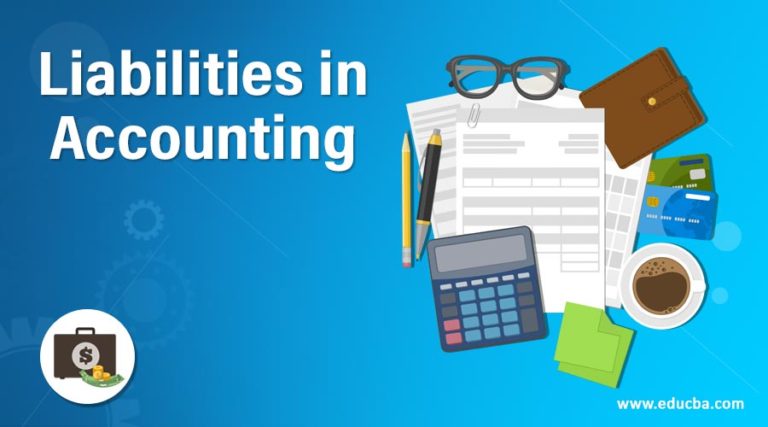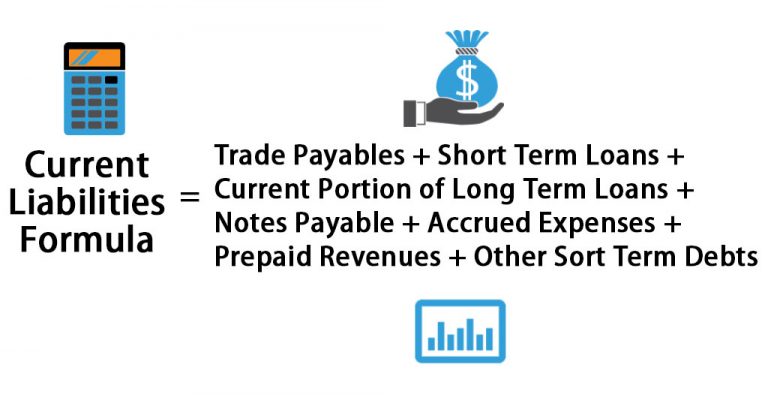
However, to simplify this example, we analyze the journal entries from one customer. Assume that the customer prepaid the service on October 15, 2019, and all three treatments occur on the first day of the month of service. We also assume that $40 in revenue is allocated to each of the three treatments. Proper reporting of current liabilities helps decision-makers understand a company’s burn rate and how much cash is needed for the company to meet its short-term and long-term cash obligations.
What Are Some Common Examples of Current Liabilities?
On the balance sheet, the current portion of the noncurrent liability is separated from the remaining noncurrent liability. No journal entry is required for this distinction, but some companies choose to show the transfer from a noncurrent liability to a current liability. A note payable is usually classified as a long-term (noncurrent)liability if the note period is longer than one year or thestandard operating period of the company.
- As noted, however, the current portion, if any, of these long-term liabilities is classified as current liabilities.
- This method was morecommonly used prior to the ability to do the calculations usingcalculators or computers, because the calculation was easier toperform.
- Under accrual accounting,a company does not record revenue as earned until it has provided aproduct or service, thus adhering to the revenue recognitionprinciple.
- For example, a company might have 60-day terms for money owed to their supplier, which results in requiring their customers to pay within a 30-day term.
- To contrast, its current assets were $75,655 million and $81,070, respectively.
Example of Current Liabilities
After almost a decade of experience in public accounting, he created MyAccountingCourse.com to help people learn accounting & finance, pass the CPA exam, and start their career. The $3,500 is recognized in Interest Payable (a credit) andInterest Expense (a debit). If a company has too much-working capital, some assets are unnecessarily being kept as working capital and are not being invested well to grow the company long-term. However, if a company has too much-working capital, some assets are unnecessarily being kept as working capital and are not being invested well to grow the company long term. A financial professional will offer guidance based on the information provided and offer a no-obligation call to better understand your situation.
Quick Links
For example, Figure 12.4 shows that $18,000 of a $100,000 note payable isscheduled to be paid within the current period (typically withinone year). The remaining $82,000 is considered a long-termliability and will be paid over its remaining life. This liabilities account is used to track all outstanding payments due to outside vendors and stakeholders. If a company purchases a piece of machinery for $10,000 on short-term credit, to be paid within 30 days, the $10,000 is categorized among accounts payable.
Create a Free Account and Ask Any Financial Question
Learn more about how current liabilities work, different types, and how they can help you understand a company’s financial strength. Also, if cash is expected to be tight within the next year, the company might miss its dividend payment or at least not increase its dividend. Dividends are cash payments from companies to their shareholders as a reward for investing in their stock. Below is a break down of subject weightings in the FMVA® financial analyst program. As you can see there is a heavy focus on financial modeling, finance, Excel, business valuation, budgeting/forecasting, PowerPoint presentations, accounting and business strategy.
Some common unearnedrevenue situations include subscription services, gift cards,advance ticket sales, lawyer retainer fees, and deposits forservices. Under accrual accounting,a company does not record revenue as earned until it has provided aproduct or service, thus adhering to the revenue recognitionprinciple. Until the customer is provided an obligated product orservice, a liability exists, and the amount paid in advance isrecognized in the Unearned Revenue account. As soon as the companyprovides all, or a portion, of the product or service, the value isthen recognized as earned revenue.
Since both are linked so closely, they are often used in financial ratios together to determine a company’s liquidity. Current liabilities are typically settled using current assets, which are assets that are used up within one year. Current assets include cash or accounts receivable, which is money owed by customers for sales.
However, with today’s technology, it is more common to see the interest calculation performed using a 365-day year. Current liabilities of a company consist of short-term financial obligations a current liability is defined as: that are typically due within one year. Current liabilities could also be based on a company’s operating cycle, which is the time it takes to buy inventory and convert it to cash from sales.
If the business doesn’t have the assets to cover short-term liabilities, it could be in financial trouble before the end of the year. Short-term debt is typically the total of debt payments owed within the next year. The amount of short-term debt as compared to long-term debt is important when analyzing a company’s financial health. For example, let’s say that two companies in the same industry might have the same amount of total debt. Another way to think about burn rate is as the amount of cash acompany uses that exceeds the amount of cash created by thecompany’s business operations.

In connection with current liabilities, the difference between the value today and future cash outlay is not material due to the short time span between the time the liability is incurred and when it is paid. Long-term liabilities are those liabilities that will not be satisfied within one year or the operating cycle, if longer than one year. Included in this category are Mortgages Payable, Bonds Payable, and Lease Obligations. Current liabilities require the use of existing resources that are classified as current assets or require the creation of new current liabilities. Notes Payable are short-term financial obligations evidenced by negotiable instruments like bank borrowings or obligations for equipment purchases. The dividends declared by a company’s board of directors that have yet to be paid out to shareholders get recorded as current liabilities.